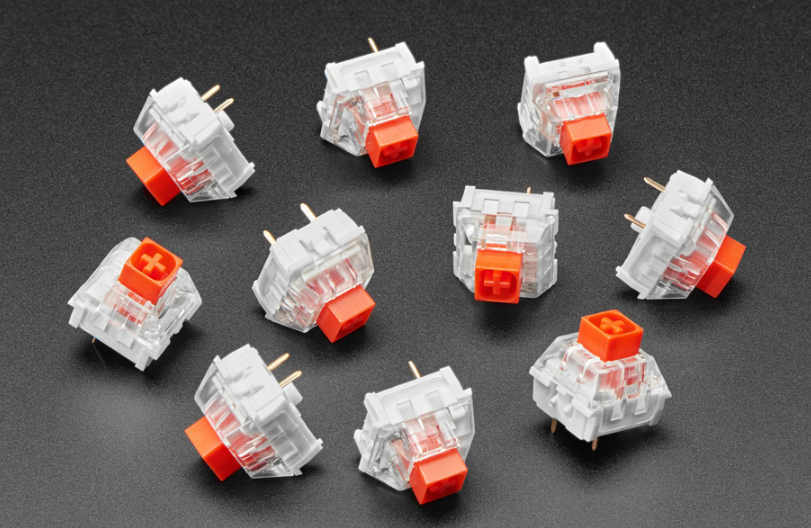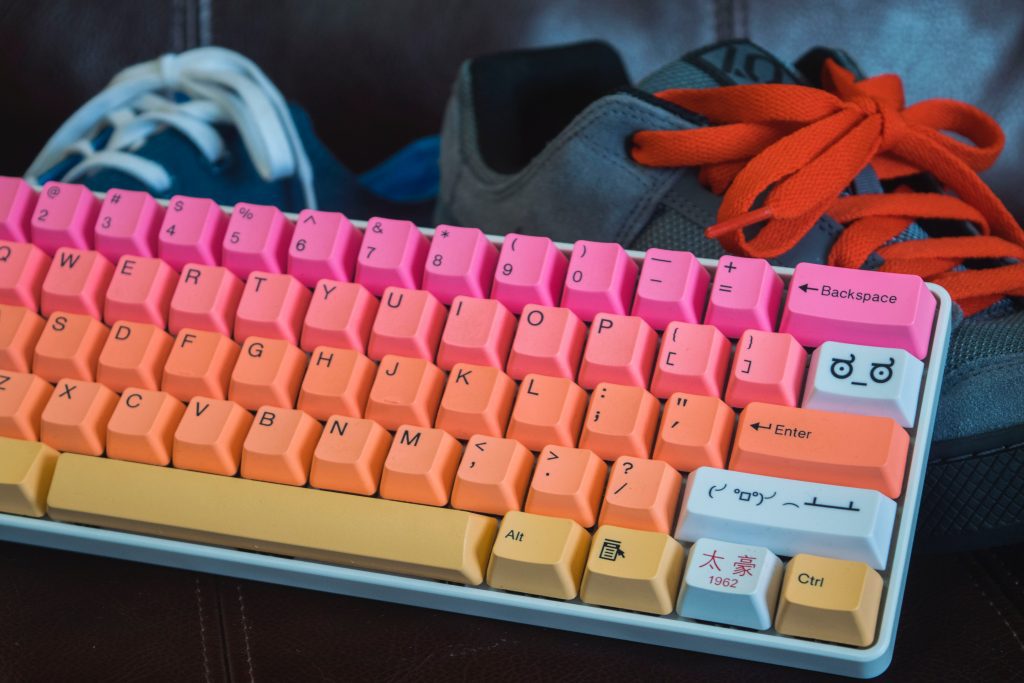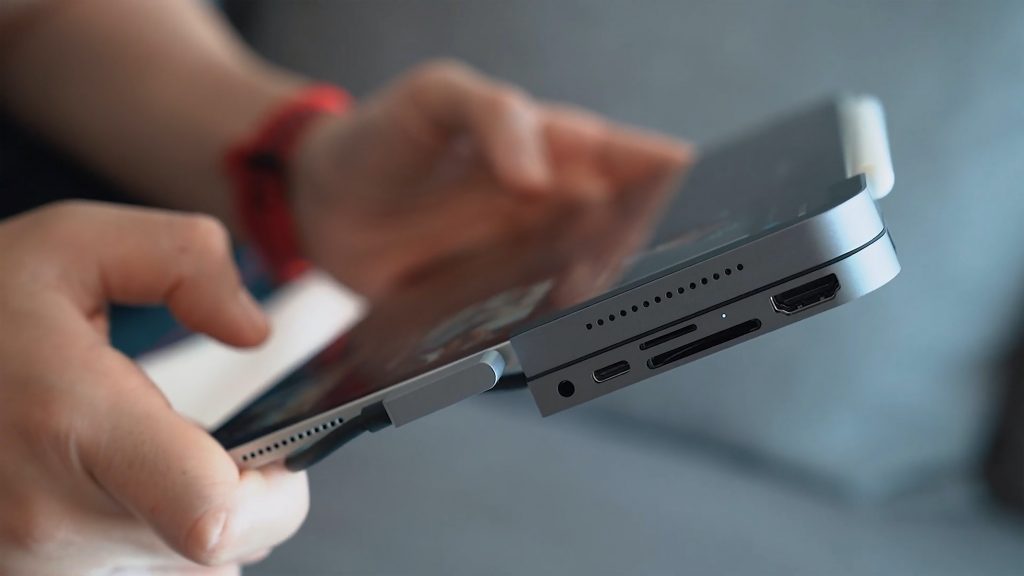Mechanical keyboards have a legion of fans. Many gamers do not hesitate to choose them due to the profound and positive impact they have on their experience, but they are by no means the only users who bet on these keyboards.
It is enough to go through any discussion thread in which the suitability of any of the technologies used by these devices is debated to realize that many programmers, editors, and users of office tools also prefer them to membrane keyboards and hybrids.
The choice of one keyboard or another is deeply personal. There is no technology, let alone a particular keyboard, that fits like a glove with the experience that all users are looking for. However, mechanical keyboards bring together several of the virtues most appreciated by many users.

The tactile response and the sound stimulus that they offer us are addictive for some of them. And, in addition, the range of switches that can be incorporated is wide enough to put in our hands a very interesting customization capacity.
It only takes a few minutes to use a good mechanical keyboard to see why so many users love them. However, we cannot ignore that they are not to everyone’s liking. In the discussion threads in which these peripherals are discussed, hardly anyone complains about the tactile experience they offer us. Its robustness is also often perceived positively.
However, the main source of complaints is its sound. Many people believe that all mechanical keyboards are noisy, which is not the case. There are loud, moderately loud, and reasonably quiet ones. The latter are the real protagonists of this article.
Switches are the heart of mechanical keyboards
Every time we press one of the keys on a mechanical keyboard, a small mechanical switch ( switch ) is activated that works in a very similar way to the on and off switch that we can find in many household appliances or light switches. When we activate it, it simply allows the passage of electrical current, and from there the keyboard microcontroller takes control.
The microcontroller is a program that is responsible for identifying which key, or keys, we have pressed at a given moment to send a signal with that information to our PC
The microcontroller is nothing more than a program that, broadly speaking, is responsible for identifying which key, or keys, we have pressed at a given moment to send a signal with that information to our PC and trigger the appropriate actions in the operating system and applications. . A very interesting feature of mechanical keyboards is that they can incorporate switches with different properties that also provide us with a different experience.
In addition, each key has its switch, so it is possible to change it for a new one if it breaks without considering buying a new keyboard just because one or more keys have stopped working. In any case, the most interesting thing is that each switch has unique properties that invite us to choose the mechanical keyboard with the switches that best fit the experience we are looking for. These are the most important characteristics of mechanical switches:
- Travel: identifies the distance that exists between the position that a key adopts when we do not exert pressure on it and the position in which it is found when the pressure is maximum.
- Actuation point: coincides with the exact position of the travel of a key in which the microcontroller carries out the registration of the press. For the pressure we exert on a switch to trigger the pressing of a key, we don’t need to complete the entire route.
- Actuation force: reflects the pressure that we must exert with our fingers on the surface of the keys so that the press is registered by the microcontroller. The unit of measurement used to quantify this force is the centinewton (CN), which is one-hundredth of 1 newton (1 newton = 100 centinewtons).
- Tactile sensation: it is the response that we perceive when we exert pressure on the keys. It can be linear, so our feel doesn’t vary throughout the key travel; tactile, so that a slight vibration is produced just at the point of the route in which the activation of the pulsation is carried out; or with a click, so that when the activation occurs, the key emits a slight click that we can hear.
- Not all switches emit noise; there are also reasonably quiet ones
- Currently, there are several manufacturers of switches for mechanical keyboards with a vast catalog of solutions that offer us different experiences. To ensure that the performance of each switch is different, these brands act on the parameters that we have just investigated. Razer, Logitech, Alps, Greentech, Kailh, Outemu, Gateron, TTC, and KBtalking are just some of the companies that specialize in manufacturing switches for mechanical keyboards.
- Razer, Logitech, Alps, Greentech, Kailh, Outemu, Gateron, TTC, and KBtalking are some of the companies that specialized in manufacturing switches for mechanical keyboards
- There are endless manufacturers, but among all of them, the German company Cherry stands out not only because it is the oldest; it is also the one with some of the highest quality switches and the one that other brands take as a reference to evaluate the performance of their products. The following table summarizes the characteristics of some of the switches that we can find in the current Cherry catalog:
- The experience offered by a mechanical keyboard is very different from that offered by a membrane device. The response we get when we press a key on one of them gives us more information because we perceive a tactile stimulus that is accompanied by a slight sound stimulus in the form of a slight click if we choose some of the switches that we have just reviewed in the table.
- In addition, the useful life of the switches is very long, with the best quality ones reaching 50 million keystrokes or more; the resistance they offer to movement throughout the entire travel is usually pleasant, which contributes to their smooth operation; and last but not least, they can be easily cleaned thanks to the space left by the switches between the base of the keys and the keyboard surface.
- But not everything is advantageous. And it is that mechanical keyboards are more expensive, bulky, heavy, and noisy than membrane ones. Still, as I mentioned in the first paragraphs of the article, in some usage scenarios they fit like a glove. To play the best option is, without a doubt, a mechanical keyboard thanks to the tactile and auditory response that pressing the keys offers us, although, as we have seen in the table, there are also silent switches.
- To play the best option is a mechanical keyboard thanks to its tactile and auditory response
- In this scenario of use, their durability, the possibility of changing the switches and customizing them, and, above all, their ability to activate several keys simultaneously is also a point in favor of mechanical keyboards. A very interesting technology implemented by some brands in their mechanical keyboards is anti- ghosting or critical rollover, which precisely seeks to guarantee that we can press several keys at the same time without any of them being masked and not activated. With games this is crucial.
- In addition, the tactile and auditory stimulation offered by pressing the keys can have a beneficial impact on the experience of people who use them to write texts, programs, or any other application that involves a high number of keystrokes per minute. These are precisely the scenarios of use in which mechanical keyboards that emit less noise when we press their keys to fit best. Some of them rival hybrid and membrane keyboards for their low noise level.
- Setting up low-noise switches is a challenge
- And it is for a reason: it is not about making them quieter at the cost of losing the other qualities of mechanical switches along the way. If your tactile feedback, whatever our favorite, is gone, so is what makes mechanical keyboards so appealing to so many. Nor is it permissible to design a quieter mechanism that shortens the life of the switches or increases transverse oscillation of the keys, and therefore mechanical fatigue on the users’ wrists.
- The purpose of switch manufacturers is to preserve the essence of their mechanical switches, maintain their virtues, and, at the same time, reduce the noise level emitted by the keystrokes. Each brand has its recipe to achieve this goal, and, as is logical, they all tend to protect their efforts in innovation and research by patenting their technology. Even so, we have the clues we need to intuit how they manage to significantly reduce the noise level emitted by their switches.
- It is more complex to set up a silent switch with tactile feedback than a linear silent switch
- A strategy that most brands usually choose to increase the range of options offered to users is to develop mechanisms without audible clicks. Removing the click does not make the mechanism completely silent, but it does reduce the noise level noticeably. However, brands are aware that many users do not want to do without the click because the auditory stimulus that comes with it acts as confirmation of pressing a key. Those users often prefer to attenuate it, but without eliminating the auditory response.
- On the other hand, it is more complex to fine-tune a silent switch with the tactile response, which offers us a slight resistance in the final section of the travel to confirm pressing the key when reaching the actuation point, than a linear silent switch that does not offer us any tactile stimulation along the route. The challenge is to maintain the tactile stimulus while attenuating the noise as much as possible.
- To inhibit noise as much as possible, manufacturers act on the switch elements that generate noise as a result of the mechanical interaction between them. This interaction occurs, for example, between the key shell and the switch base. One way to mitigate noise that many brands are betting on is to introduce small rubber rings (known in English as O-rings) that, precisely, mediate the interaction of these two elements by absorbing part of the mechanical energy that they transfer.
- Another critical element that usually has a perceptible impact on the noise emitted by a switch is the spring that is responsible for the key returning to its initial position when we stop pressing it. The best quality springs are usually made of steel, and they must be properly lubricated to minimize the ‘ping’, which is the typical sound that a spring emits when we stop exerting pressure on it and it recovers its initial volume.
- Some manufacturers choose very carefully the materials they use in fine-tuning the components of their silent switches, such as the protector that covers the spring, which is usually made of rubber or silicone, because each material has a different acoustic energy absorption index. And it also interacts with the components that come into contact with it differently.
- Even the interior space of each switch determines the noise it emits because it acts as a resonance box capable of amplifying it. If we stick to this characteristic, buttons with a low profile or reduced profile have an advantage because their internal volume is less than that of classic switches. Curiously, in some way, the switch receptacle behaves like the enclosure of an acoustic box.
We propose this selection of mechanical keyboards with a low noise level
Finding a good mechanical keyboard that is also relatively quiet is not difficult. Currently, on the market, we can find a wide range of brands that have quality keyboards, and many of them allow us to choose between various types of switches and, different key layouts (QWERTY, AZERTY, QWERTZ…), with or without RGB lighting, etc
We must find the switch that offers us the tactile and sound stimulus we are looking for
It’s not always possible to do this, but ideally, we should be able to test several keyboards before choosing the one we intend to use for years to come. The critical element is, of course, the switch, so we must find the one that offers us the tactile and sound stimulation we are looking for. The keyboards that we propose below are of good quality and are available with low-noise switches, but it is only a starting point that aims to make your search easier. There are options of these and other brands that can also fit your preferences very well, so we suggest you investigate a little in the wide range that we can currently find on the market, taking as a guide the parameters that we have set in this article.
FAQs
1. What makes mechanical keyboards quieter?
- Quieter mechanical keyboards typically feature switches designed to reduce noise, such as Cherry MX Silent or rubber-dome hybrid switches. They may also include dampeners or o-rings to dampen the sound of keypresses.
2. Do quieter mechanical keyboards sacrifice typing feel for reduced noise?
- No, quieter mechanical keyboards are designed to maintain the tactile feedback and keypress feel associated with traditional mechanical switches while minimizing the noise produced during typing.
3. Are quieter mechanical keyboards suitable for gaming?
- Yes, quieter mechanical keyboards can be suitable for gaming. They offer the advantage of tactile feedback and rapid keypress registration without the distraction of loud clicks, making them a popular choice among gamers who prefer a quieter environment.
4. Can I customize the sound level of a quieter mechanical keyboard?
- Some quieter mechanical keyboards offer customization options. You may be able to adjust keyswitches or add dampening materials to further reduce sound. However, these options can vary depending on the keyboard model.
5. Are quieter mechanical keyboards more expensive than regular ones?
- The price of quieter mechanical keyboards can vary depending on the brand, features, and build quality. In some cases, they may be slightly more expensive due to the specialized switches or dampening mechanisms used. However, the price difference is usually not significant, and there are budget-friendly options available as well.
Conclusion:
In the world of computer peripherals, mechanical keyboards have gained immense popularity for their tactile feedback and distinct sound profiles. However, not everyone appreciates the audible clickity-clack of traditional mechanical switches. Fortunately, mechanical keyboards that produce minimal sound are available to cater to those seeking a quieter typing experience.
These quieter mechanical keyboards incorporate various design elements and switch types to minimize noise while preserving the tactile feel that mechanical enthusiasts adore. Whether you’re in a shared workspace, a quiet home environment, or simply prefer a less disruptive keyboard, these options offer a compelling solution.
In conclusion, mechanical keyboards that sound little strike a harmonious balance between the benefits of mechanical switches and the need for a quieter work or gaming space. They provide users with the best of both worlds, allowing for efficient, comfortable typing without the distracting noise associated with standard mechanical keyboards.




